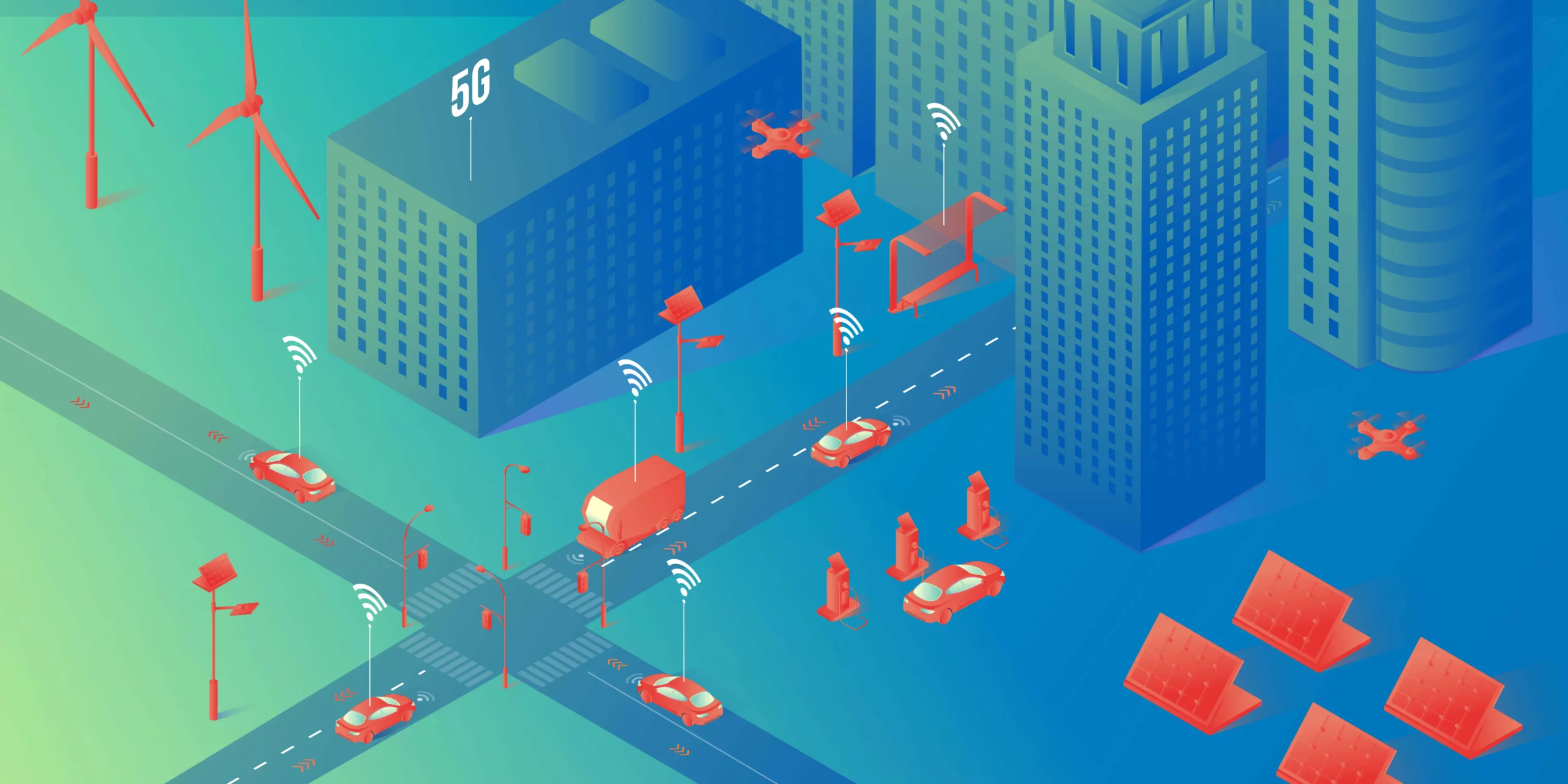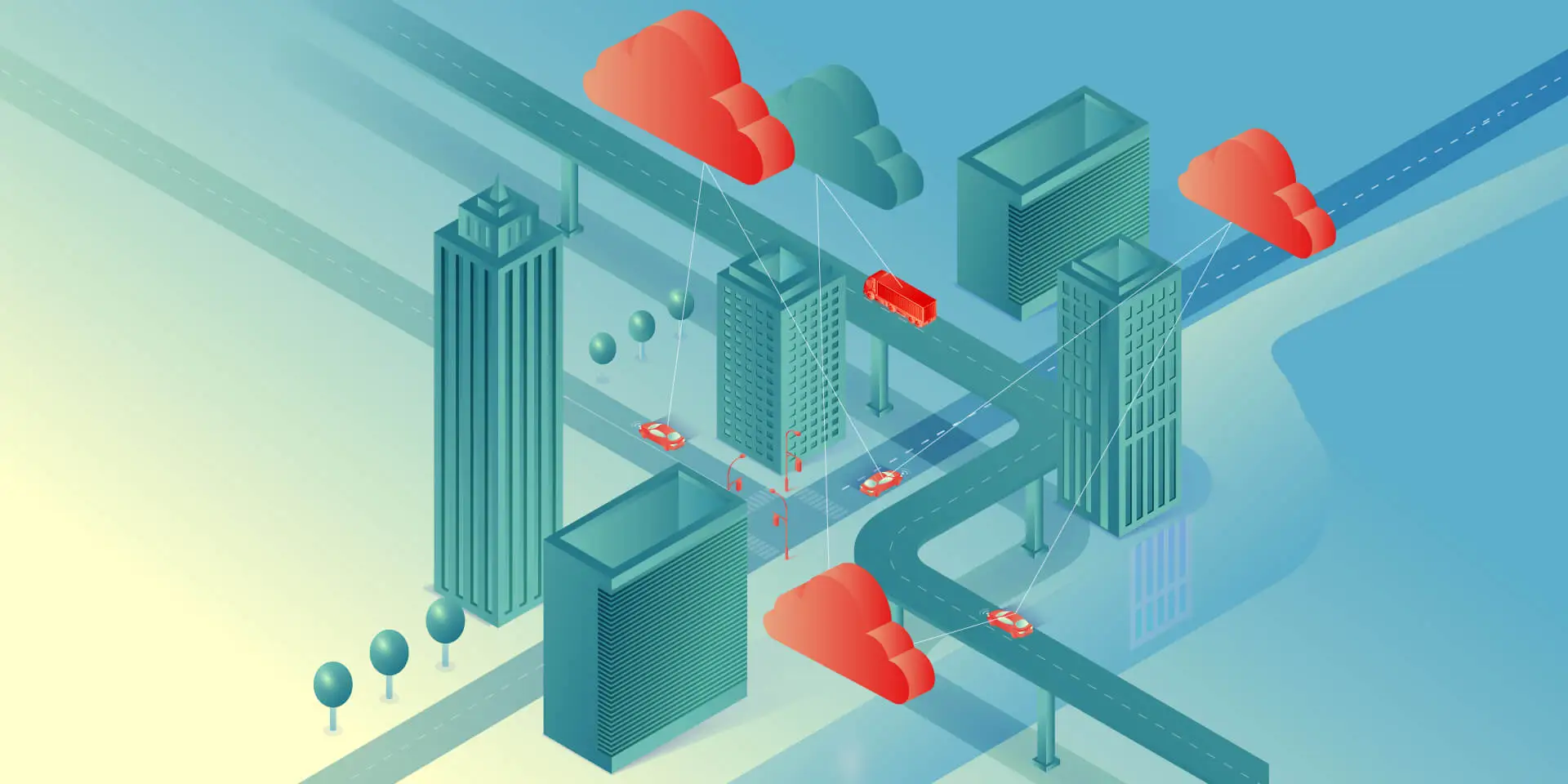Software-Defined Vehicle and Fleet Management

With the development of artificial intelligence, the Internet of Things, and cloud solutions, the amount of data we can retrieve from a vehicle is expanding every year. Manufacturers improve efficiency in converting this data into new services and enhance their own offerings based on the information received from connected car systems. Can software-defined vehicle solutions be successfully applied to enabling fleet management systems for hundreds or even thousands of models? Of course, it can, and even should! This is what today’s market, which is becoming steadily more car-sharing and micro mobility-based, expects and needs.
Netflix, Spotify, Glovo, and Revolut have taught us that entertainment, ordering food, or banking is now literally at our fingertips, available here and now, whenever we need or want it. Contactless, mobile-first processes, that reduce queues and provide flexibility, are now entering every area of the economy, including transportation and the automotive industry.
Three things: saving time, sparing money, and ecological trends dramatically change the attitude toward owning a car or choosing means of transport. Companies such as Uber, Lyft, or Bird cater to the needs of the younger generation, preferring renting over ownership.
The data-driven approach has become a cornerstone for automotive companies – both new, emerging startups and older, decades-old business models, such as car rental companies. None of the companies operating in this market can exist without a secure and well-thought-out IT platform for fleet management. At least if they want to stay relevant and compete.
It is the software – on an equal footing, or even first before the unique offer – that determines the success of such a company and allows it to manage a fleet of vehicles, which sometimes includes hundreds, if not thousands of models.
Depending on the purpose of the vehicles, the business model, and the scale of operations, solutions based on software will obviously vary, but they will be beneficial to both the fleet manager and the vehicle renter. They allow you to have an overall view of the situation, extract more useful information from received data and reasonably scale costs.
Among the potential entities that should be interested in improvements in this matter, the following types of fleets can be specifically mentioned:
- city e-scooters, bicycles, and scooters;
- car rentals;
- city bus fleets;
- tour operators;
- transport and logistics companies;
- cabs;
- public utility vehicles (e.g., fire departments, ambulances, or police cars) and government limousines;
- automobile mechanics;
- small private fleets (e.g., construction or haulage companies)
- insurers’ fleets;
- automobile manufacturers’ fleets (e.g., replacement or test vehicles).
The benefits of managing your fleet with cloud software and the Internet of Things (IoT)
Real-time vehicle monitoring (GPS)
A sizeable fleet implies a lot of responsibility and potentially a ton of problems. That’s why it’s so important to promptly locate each vehicle included and monitor it in real-time:
- the distance along the route,
- the place where the car was parked,
- place of breakdown.
This is especially useful in the context of a bus fleet, but also in the sharing-economy group of vehicles: city e-scooters, bicycles, and scooters. In doing so, the business owner can react quickly to problems.
Recovering lost or stolen vehicles
The real-time updated location, working due to IoT and wireless connectivity, also enables operations in emergency cases. This is because it allows you to recover a stolen or abandoned vehicle.
These benefits will be appreciated, for example, by people in charge of logistics transport fleets. After all, vehicles can be stolen in overnight parking lots. In turn, the fight against abandoned electric 2-wheelers will certainly be of interest to owners of the startups, which often receive complaints about scooters abandoned outside the zone, in unusual places, such as in fields or ditches in areas where there is no longer a sidewalk.
Predictive maintenance
We should also mention advanced predictive analytics for parts and components such as brakes, tires, and engines. The strength of such solutions is that you receive a warning (vehicle health alerts) even before a failure occurs.
The result? Reduced downtime, better resource planning, and streamlined decision-making. According to estimates, these are savings of $2,000 per vehicle per year.
More convenient vehicle upgrades – comprehensive OTA (Over-the-Air)
Over-the-Air (OTA) car updates are vital for safety and usability. Interconnected and networked vehicles can be updated in one go, simultaneously. This saves the time otherwise required to manually configure each system one by one. In addition, operations can also be performed on vehicles that happen to be out of the country.
Such a facility applies to virtually all industries relying on extensive fleets, especially in the logistics, transportation, and tourism sectors.
Intermediation in renting
A growing number of services are focusing on service that is fast, simplified, and preferably remote. For instance, many rooms or apartment rentals on Airbnb rely on self-service check-in and check-out, using special lockups and codes.
Similar features are offered by software-defined vehicles, which can now be rented “off the street”, without the need for service staff. The customer simply selects a vehicle and, via a smartphone app, unlocks access to it. Quick, easy, and instant.
Loyalty scheme for large fleets
Vehicle and software providers are well aware that new technology comes with great benefits, but also with a degree of investment. In order to make such commitments easier to decide upon, attractive loyalty schemes are being rolled out for larger fleets.
So as a business owner you reap double benefits. And at the same time you test, on lucrative terms, which solutions work best for you.
Improved fleet utilization
Cloud and IoT software enables more practical use of the entire fleet of available vehicles and accurately pinpoints bottlenecks or areas where the most downtime occurs.
This is an invaluable asset in the context of productivity-driven businesses, where even a few hours of delay can result in significant losses.
By contrast, artificial intelligence(AI)-based predictions(for example, information about an impending failure) offered to commercial fleets provide fleet managers with more anticipatory data, which can significantly cut business costs. Other benefits include improved emissions control or higher environmental standards.
Increasing safety
Minimized almost to zero danger of hacking into the system contributes to the security of the fleet-based business.
Case study: Ford Pro™ Telematics
Revenues based on software and digital services is not a bad deal for all informed participants in the business environment. Some big players like Ford have based their entire business model, on this idea. With their Ford Pro™ series of solutions, they want to become an accelerator for highly efficient and sustainable business. Their offering is based on market-ready commercial vehicles to suit almost any business needs and on all-electric trucks and vans. They are developing telematics in particular.
Ford Chief Executive Jim Farley puts it bluntly: We are the Tesla of this industry.
Bold assumptions? Yes, but also an equally bold implementation. Created in May 2021, a standalone Ford Pro™ unit is to focus exclusively on commercial and government customers. The new model also serves as a prelude to expanding digital service offers for retail customers.
The objective is to increase Ford Pro’s annual revenue to $45 billion by 2025, up 67% from 2019.
Streamlined vehicle repairs
Managing a large group of vehicles also necessitates regular inspections and repairs, and at different times for different vehicles. This entails the need to control each unit individually.
The risk this poses is that information about the problem may not reach decision-makers in time, and besides, instead of the service and product, the executive is constantly focused on responding to anomalies. New technologies partially eliminate this problem.
As part of the Ford Pro Telematics Essentials package, vehicle owners receive real-time alerts on vehicle status in the form of engine diagnostic codes, vehicle recalls, and more. There’s also a scheduled service tracking feature and, in the near future, remote locking/unlocking, which will further enhance fleet management.
Driver behavior insights
Human-centered technology can help improve driver performance and road safety. Various sensors and detectors inside Ford vehicles provide a lot of interesting information about the driver’s behavior. They monitor the frequency and suddenness of actions such as braking or accelerating. Knowledge of this type of behavior allows for better fleet planning and improved driver safety.
Fuel efficiency analysis
Fuel is one of the major business costs for companies managing a large number of vehicles. Ford Pro™ Telematics, therefore, approaches customers with a solution to monitor fuel consumption and engine idle time.
This functionality is designed to optimize performance and reduce expenses. Better exhaust control also indirectly lowers operating costs.
Manage all-electric vehicle charging with E-Telematics
Telematics also provides an efficient way to manage a fleet consisting of electric vehicles. There are many indications that due to increasingly stringent environmental standards, they will form the backbone of various operations.
That’s why Ford has developed its own E-Telematics software. It enables comprehensive monitoring of the charging status of the electric vehicle fleet. In addition, it helps drivers find and pay for public charging points and facilitates reimbursement for charging at home.
The system also offers the ability to accurately compare the efficiency and economic benefits of electric vehicles versus gas-powered ones.
Better cooperation with insurers
Cloud-based advanced telematics software not only provides a better customer experience. What also counts is a streamlined collaboration with insurance providers and the delivery of vehicle rental services to clients of such companies.
This, of course, requires a special tool that enables:
- remote processing of the case reported by the customer,
- making the information available to the rental company,
- allowing rental company personnel to provide a vehicle that meets the driver’s needs.
The goal is to provide replacement cars for the customers of partnering insurers.
Touchless and counter-less experience
It includes verifying a customer and unlocking a car using a mobile app. This translates into greater customer satisfaction and the introduction of new business models. With the introduction of mobile apps in app stores, queues can be shortened. This results in a simplified rental process. From now on, it is more intuitive and focused on user experience and benefits. Because nowadays customers expect mobile and contactless service.
Case study: car rental
The leading rental enterprise teamed up with Grape Up to provide counter-less rental services and a touchless experience for their customers. By leveraging a powerful touchless platform and telematics system used by the rental enterprise, the company was able to build a more customer-friendly solution and tackle more business challenges, such as efficient stolen car recovery and car insurance replacement.
Software-defined vehicle solutions in vehicle fleets. How do implement them sensibly?
Technological changes that we are experiencing in the entertainment industry or e-commerce have also made their way into the automotive sector as well as micro-mobility and car rentals. There are many indications that there is no turning back.
Solutions such as real-time tracking, predictive maintenance, and driverless rental are the future. They help manufacturers execute their key processes more efficiently and track and manage their fleets effectively. In turn, the end customer receives an intuitive and convenient tool that fosters brand loyalty and makes life easier.
Of course, they need to be implemented properly. A large role is played by the quality of software. The key is the efficient flow of data and their cooperation with devices inside the vehicle. That is why it is worth choosing for business cooperation such a company that not only has the appropriate technological competence, but also the knowledge and experience gained during other such projects and implementations for the automotive industry.
Do you want to streamline your business and manage your own fleet of vehicles even better? Trust Grape Up. We ensure the skills necessary to build the entire cloud architecture, backend systems, frontend, and mobile apps – iOS and Android.

Check related articles
Read our blog and stay informed about the industry's latest trends and solutions.
see all articles

Predictive Transport Model and Automotive. How Can Smart Cities Use Data from Connected Vehicles?
Read the article





